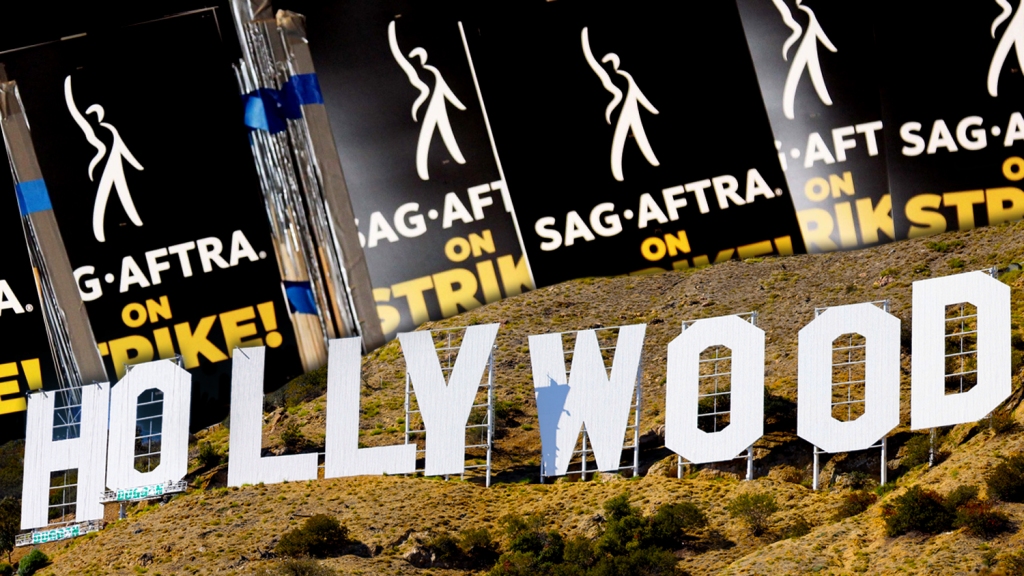
For the first time since 1960, both the WGA and SAG-AFTRA(then only the SAG) have simultaneously gone on strike. While that’s been commonly expressed to every major outlet, there’s a lot to note of such occurrences. Of course, there are key differences in some of the goals of both; primarily in regards to streaming and AI. However, the conditions leading to such a dual strike to occur have more similarities than one may expect. As such, it’s worth comparing the events of both 2023 and 1960, as it could provide an idea of how this could affect the industry moving forward.
History of the 1960 Strike
While a common place in homes now, television was to 1960 what streaming is to 2023. Being a massive game changer, nearly 45 Million Americans owned a TV in 1960. From an executive perspective, those in Hollywood saw both the threat, and potential in television. This especially as the film industry had been in decline throughout the 1950s, despite a few big hits. This in part was due to the release of many high budget films, which saw little returns, and smaller independent productions, social shifts, and of course, television, providing new competition.
Likewise, writers and actors’ believed residuals should be owed to them if showing their work on television, especially in regards to reruns. Many executives and producers felt the opposite of this. As a result, January 16, 1960 saw the WGA go on strike against the ATFP. SAG, led at the time by Ronald Reagan, followed soon after on March 1. In total, the strikes lasted 21 weeks, ending with huge victories for both unions. SAG would get its new contract on April 18, with the WGA following later until June 12.
SAG would manage to gain residuals for any movies made after 1960, and a one-time payment of $2.25 million for use as a pension and health plan for its members. The WGA meanwhile got a contract which would allow for 4% residual fees for TV reruns, and a 1.2% cut of TV broadcast license fee’s for any movies they wrote, in addition to money used for healthcare and pension.
Looking over all of this, at least in regard to residuals, it’s easy to see the similarities to what is seen today with streaming. Still, there are a few differences.
Background of the 2023 Strike

Compared to residuals of television, streaming residuals for both actors and writers are far, far less. In part as a result of the 2007 strike, subscriber count is how residuals are primarily decided, rather than viewership. In addition, utilizing fewer episodes for streaming shows leads to reducing the amount of residual writers receiving. Another issue writer’s face is streamers drastically cutting down the size of writers’ rooms. These ‘mini-rooms’ make it much harder for up and coming writers to get their foot in the door, as show runners are likely only to focus on getting quality writers, as opposed to those inexperienced. All in all, streaming is simply a bad deal for writers all around.
Of course, actors don’t have it much better. For an original streaming program, residual pay is only available for 90 days after going live. Of course, any residuals that one does receive are often pennies, and in total, may not even make more than a few hundred dollars. Even big name actors are affected by this, as most of their payment goes towards agents, lawyers, managers, etc. For up and coming actors, the payment is often so small, they can barely afford to pay for their homes.
Of course, there is a major difference between the 1960 strike and 2023… technology and AI.
The Threat of AI

Hollywood is a business. The ideal business goal, is to make as much money as possible, while spending as little as possible. AI presents such a frightening opportunity. Of course, it still has some ways to go, but its potential is clear. With programs like ChatGPT and AI Actors, major studios would be all too likely to utilize this tech in place of real people, if only for the fact that money doesn’t need to be spent. The Alliance of Motion Picture and Television Producers(AMPTP) has shown little interest in discussions with both the WGA and SAG-AFTRA in this regard. Simply put, rather than these studios cutting cost by reducing their unnecessarily high budgets for films that are more likely to under perform, they’d rather cut jobs and fast track technology as a solution.
In the case of writers, studios could simply generate a script, and only hire writers to clean up a script into something usable. As such, no residuals needed. Likewise, simply using an actor’s digital likeness means no payment needed, as this actor’s likeness would technically be their property. It’s easy to understand why many, both in the industry and consumers, find it a terrible prospect.
What’s Next?
The last time the dual strike occurred, it ended mostly in success for writers and actors. Such a major disruption in the industry was enough to force the hand of producers and executives to meet back for negotiations. Now, the same may just occur. Weeks ago, it was indicated that major studios and producers were going to wait out the WGA until they were desperate, perhaps even losing their homes. With both unions joining forces, and more public support for both writers and actors, it may be enough to force the AMPTP to reconsider negotiations. Only time will tell, but if 1960 is anything to go by, prospects are promising.
For information on both, check out the websites of SAG-AFTRA and the WGA.
Graduated from Point Park University in 2021 with a Degree of English Creative Writing.
Author of the Chronicles of a Broken World Series
Avid Nerd and Enjoyer of All Things Fun and Thoughtful













